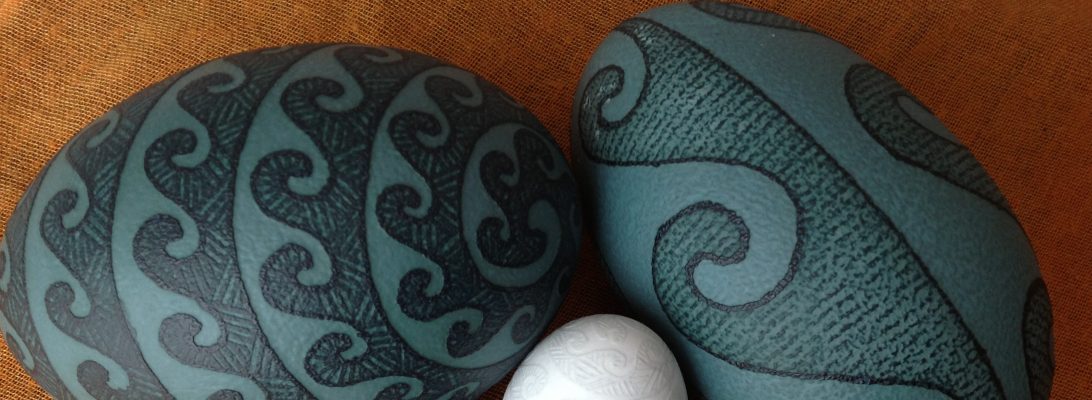Something I have noticed in these first experiments with brazilwood dye is that after the last step of the process, the removal of the wax, the red becomes considerably darker and acquires a more brown sort of a tone. I don’t know a reason for this, I was wondering whether it is affected by the color of the wax (I have been mostly using the blue-coloured wax), so I used mostly white on some of the eggs, or than maybe it was the residue of iron on the egg surface (and so I had an egg without black, hence without iron), or maybe it is just the temperature or exposure to fire when the wax is taken off (I’m removing the wax here in the most common way by melting it off next to the candle flame).
Conclusion so far is the following: I don’t think it’s the wax color, and I also don’t think it’s the iron residue, but I still don’t know what it is. It does so happen that the brighter red I have on the egg didn’t have iron on it, but it was also the last one so far, so I have dyed it to a much lighter shade initially, and it has also changed the tone a bit during wax removal. So we will have to see, maybe we’ll find something out with time.
Yellow – elderflower with alum, red – brazilwood with alum. It’s Kulzhynskyy X-10 (683) village Vyrlook, Radomyshl area, used to be Kyiv governorate, now in Zhytomyr oblast, year 1894. I already did an egg from this village last fall, and will do it again, and also maybe some other eggs from that village, they are cool!





























